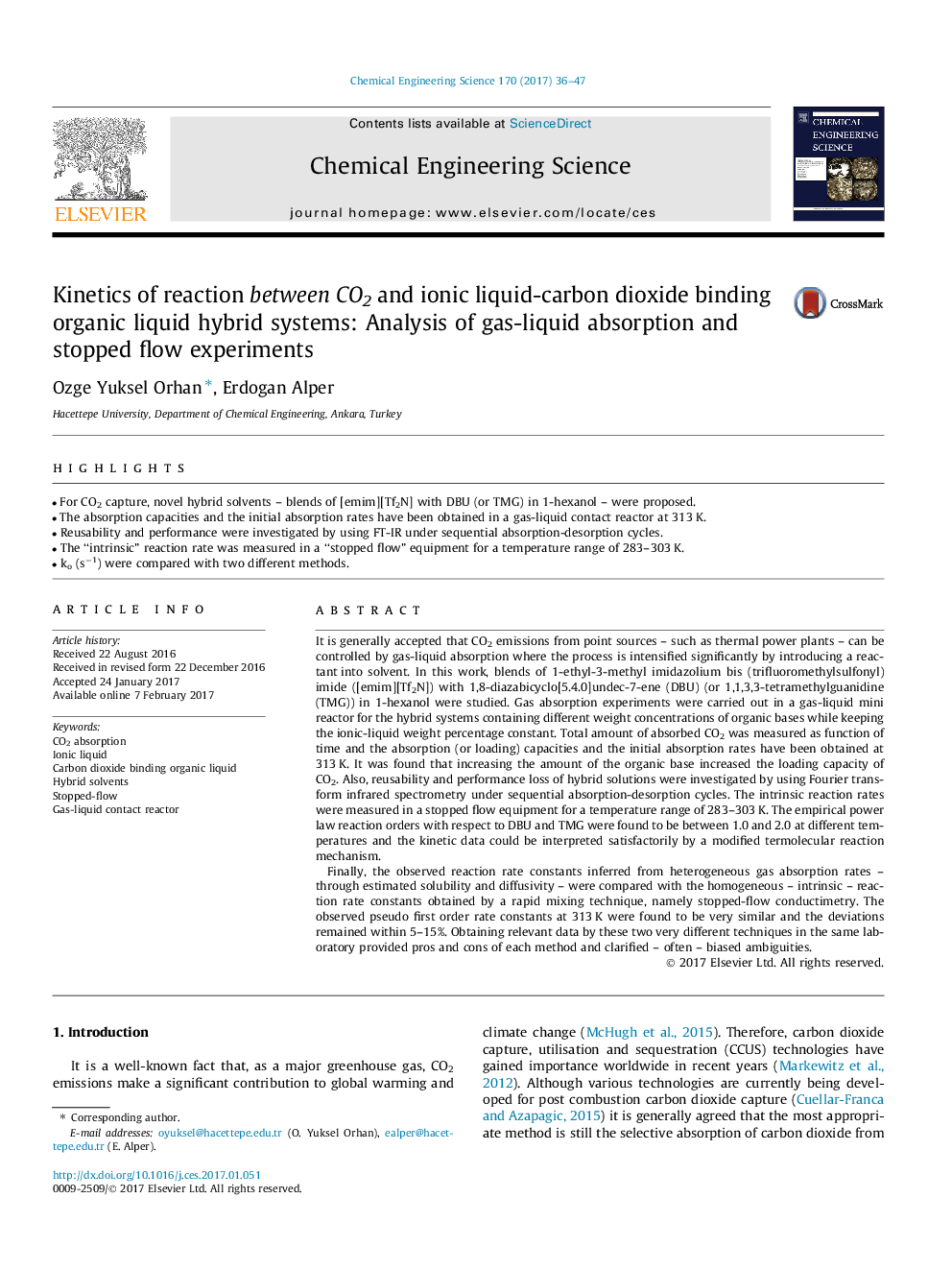| Article ID | Journal | Published Year | Pages | File Type |
|---|---|---|---|---|
| 6467194 | Chemical Engineering Science | 2017 | 12 Pages |
â¢For CO2 capture, novel hybrid solvents - blends of [emim][Tf2N] with DBU (or TMG) in 1-hexanol - were proposed.â¢The absorption capacities and the initial absorption rates have been obtained in a gas-liquid contact reactor at 313 K.â¢Reusability and performance were investigated by using FT-IR under sequential absorption-desorption cycles.â¢The “intrinsic” reaction rate was measured in a “stopped flow” equipment for a temperature range of 283-303 K.â¢ko (sâ1) were compared with two different methods.
It is generally accepted that CO2 emissions from point sources - such as thermal power plants - can be controlled by gas-liquid absorption where the process is intensified significantly by introducing a reactant into solvent. In this work, blends of 1-ethyl-3-methyl imidazolium bis (trifluoromethylsulfonyl) imide ([emim][Tf2N]) with 1,8-diazabicyclo[5.4.0]undec-7-ene (DBU) (or 1,1,3,3-tetramethylguanidine (TMG)) in 1-hexanol were studied. Gas absorption experiments were carried out in a gas-liquid mini reactor for the hybrid systems containing different weight concentrations of organic bases while keeping the ionic-liquid weight percentage constant. Total amount of absorbed CO2 was measured as function of time and the absorption (or loading) capacities and the initial absorption rates have been obtained at 313 K. It was found that increasing the amount of the organic base increased the loading capacity of CO2. Also, reusability and performance loss of hybrid solutions were investigated by using Fourier transform infrared spectrometry under sequential absorption-desorption cycles. The intrinsic reaction rates were measured in a stopped flow equipment for a temperature range of 283-303 K. The empirical power law reaction orders with respect to DBU and TMG were found to be between 1.0 and 2.0 at different temperatures and the kinetic data could be interpreted satisfactorily by a modified termolecular reaction mechanism.Finally, the observed reaction rate constants inferred from heterogeneous gas absorption rates - through estimated solubility and diffusivity - were compared with the homogeneous - intrinsic - reaction rate constants obtained by a rapid mixing technique, namely stopped-flow conductimetry. The observed pseudo first order rate constants at 313 K were found to be very similar and the deviations remained within 5-15%. Obtaining relevant data by these two very different techniques in the same laboratory provided pros and cons of each method and clarified - often - biased ambiguities.
